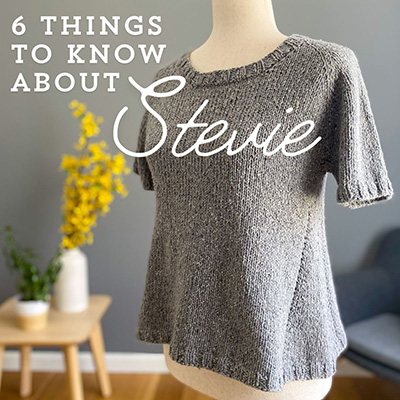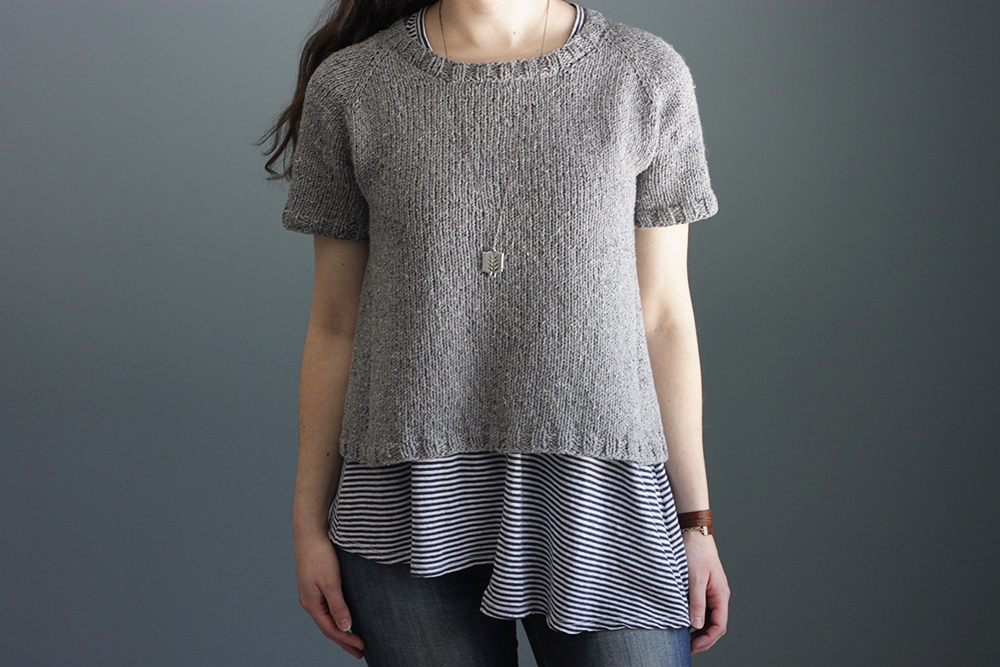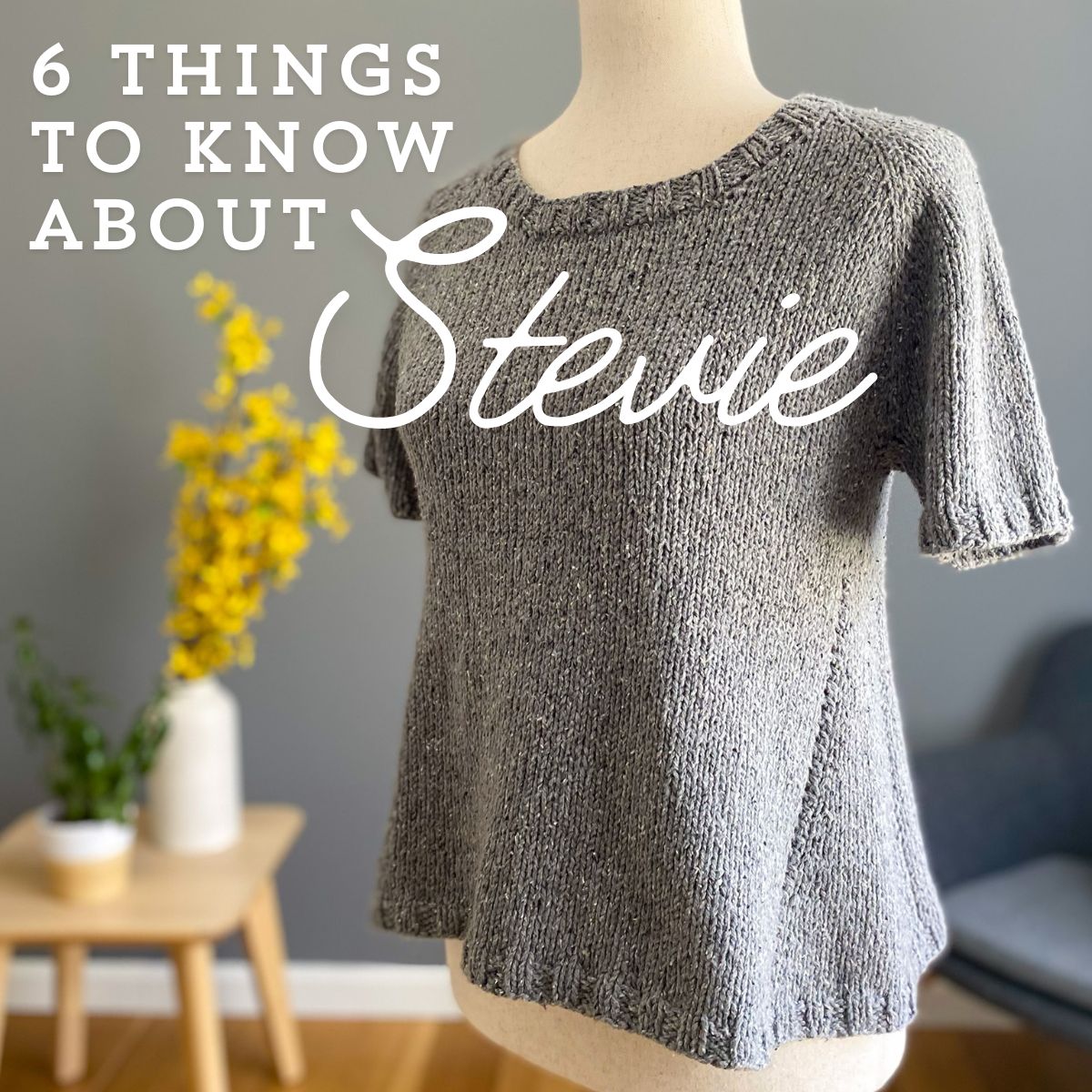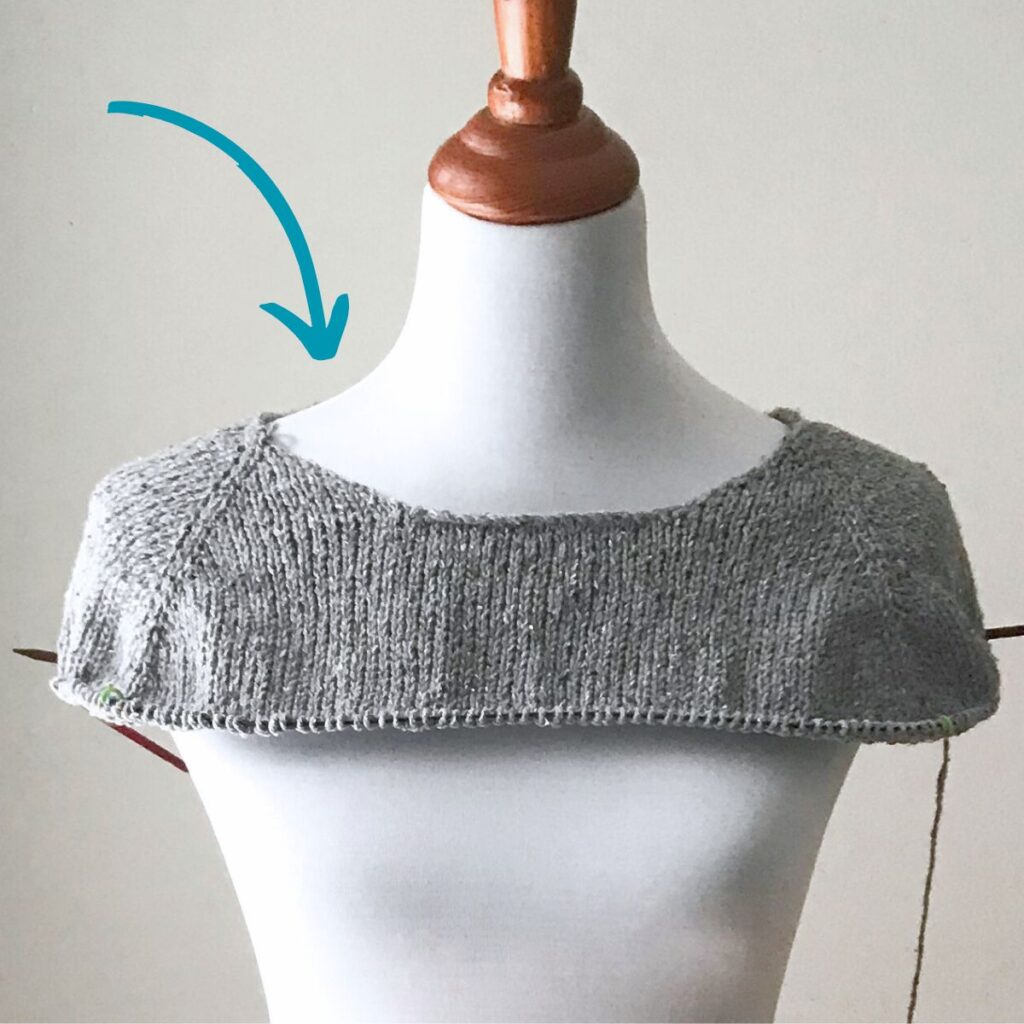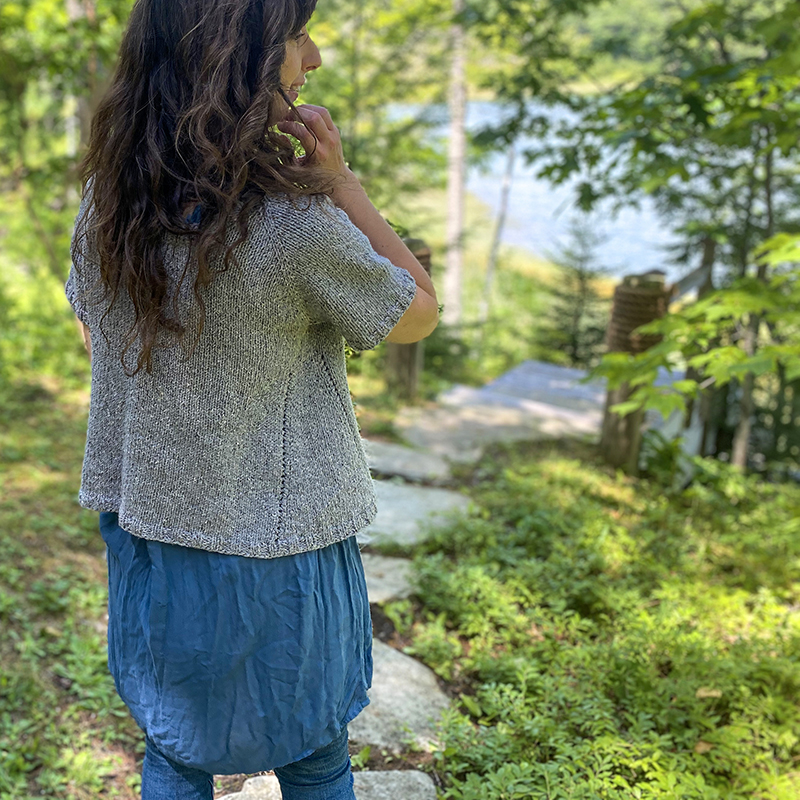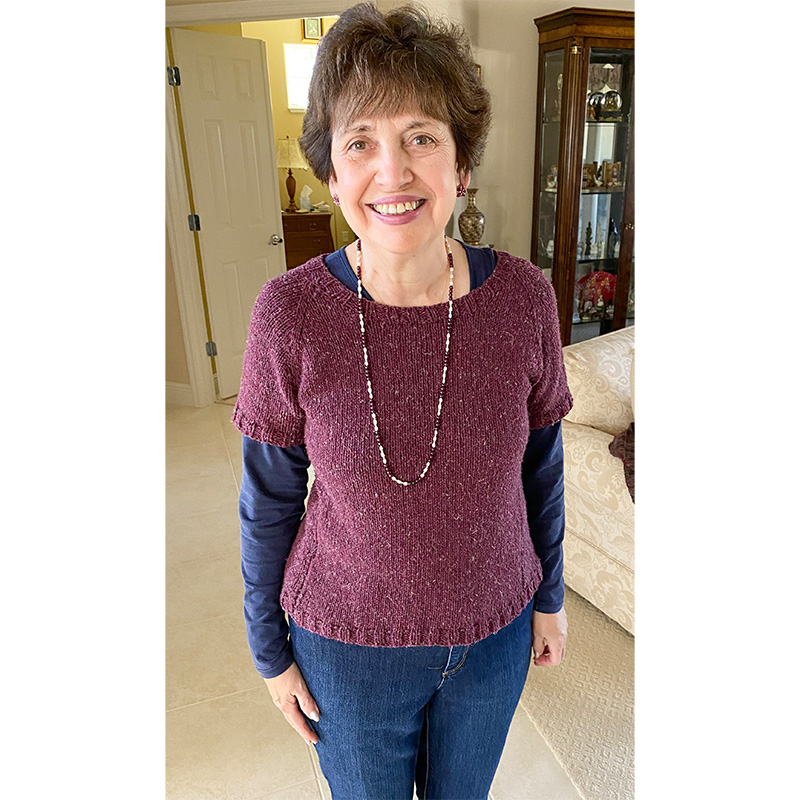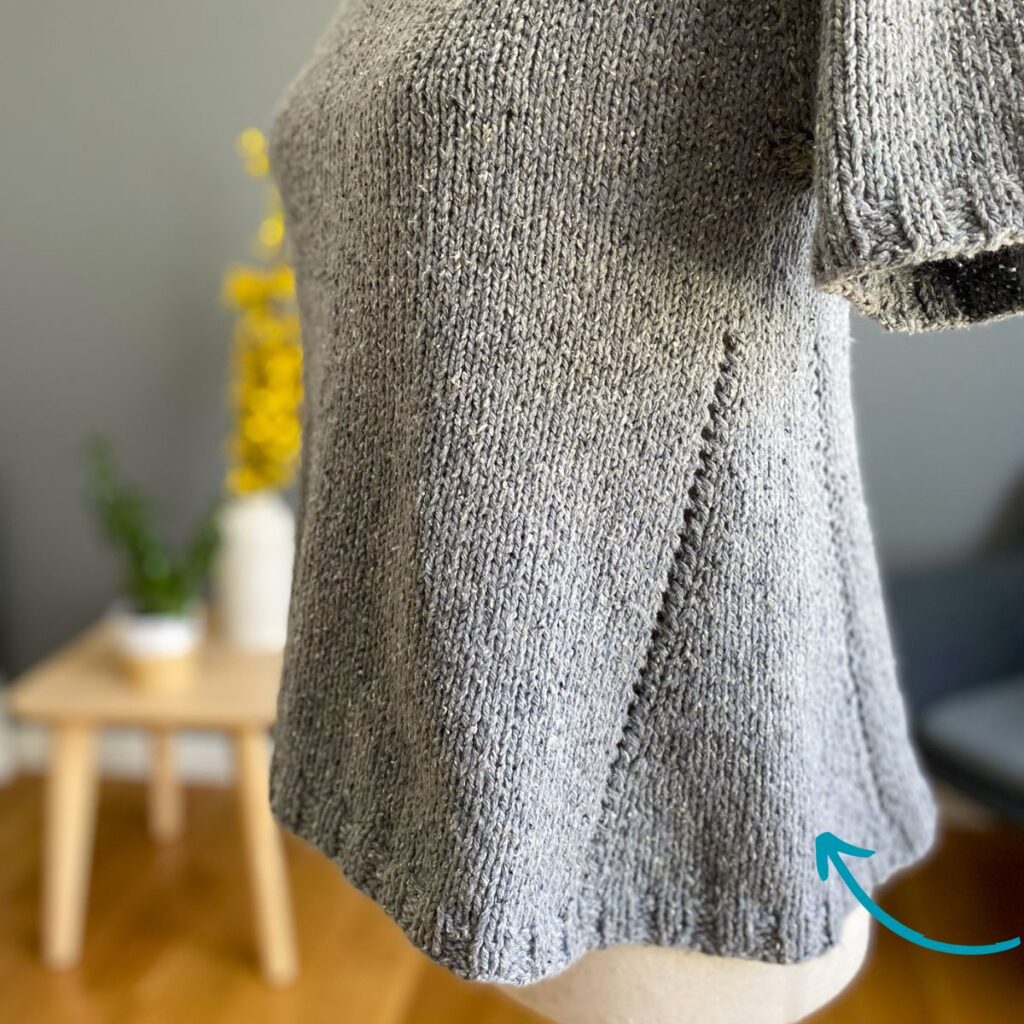April marks 6 years since I first released my Stevie top pattern! This seamless, A-line tee is knit with Berroco Remix – a lovely non-wool worsted-weight yarn that is often a yarn shop favorite. And since tomorrow (April 27th) is “LYS Day” (local yarn shop day), a day to celebrate and support our local yarn shops, I thought it would be the perfect pattern to highlight this week!
And since it’s the 6th anniversary, here are the 6 things I’d like you know about this design!
#1: It’s knit seamlessly from the top down
Stevie features top-down, raglan construction. At first you work back and forth (not in the round) as you shape the neckline and then the fronts are joined together and you work the rest of the garment in the round down to the hem. On my Stevie tips page (keep reading to #6 below) I provide tutorials on all of the top-down techniques used in this pattern!
#2: Berroco Remix is a great non-wool option for all seasons
The pattern calls for worsted-weight yarn and I used Berroco Remix – a non-wool yarn made of recycled fibers. Because there’s no wool, it’s great for warmer seasons or warmer climates. Here in Maine I love wearing Remix in the Spring, Summer and Fall and my Mom Lorraine (photographed below) who lives in Florida, loves to wear her Remix Stevie in the Fall and Winter seasons down there.
And here are some additional photos from knitters who recently finished up their Stevie tees with Remix yarn as well:

Cindy, at Alamitos Bay Yarn Co in Long Beach, California
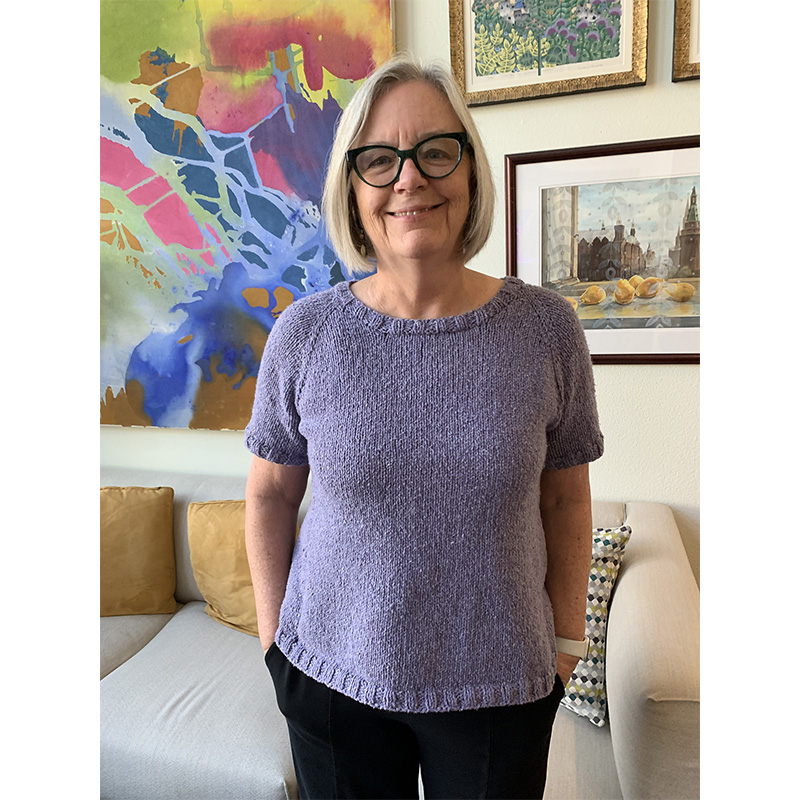
Libby from Pasadena, CA. Ravelry project page here.
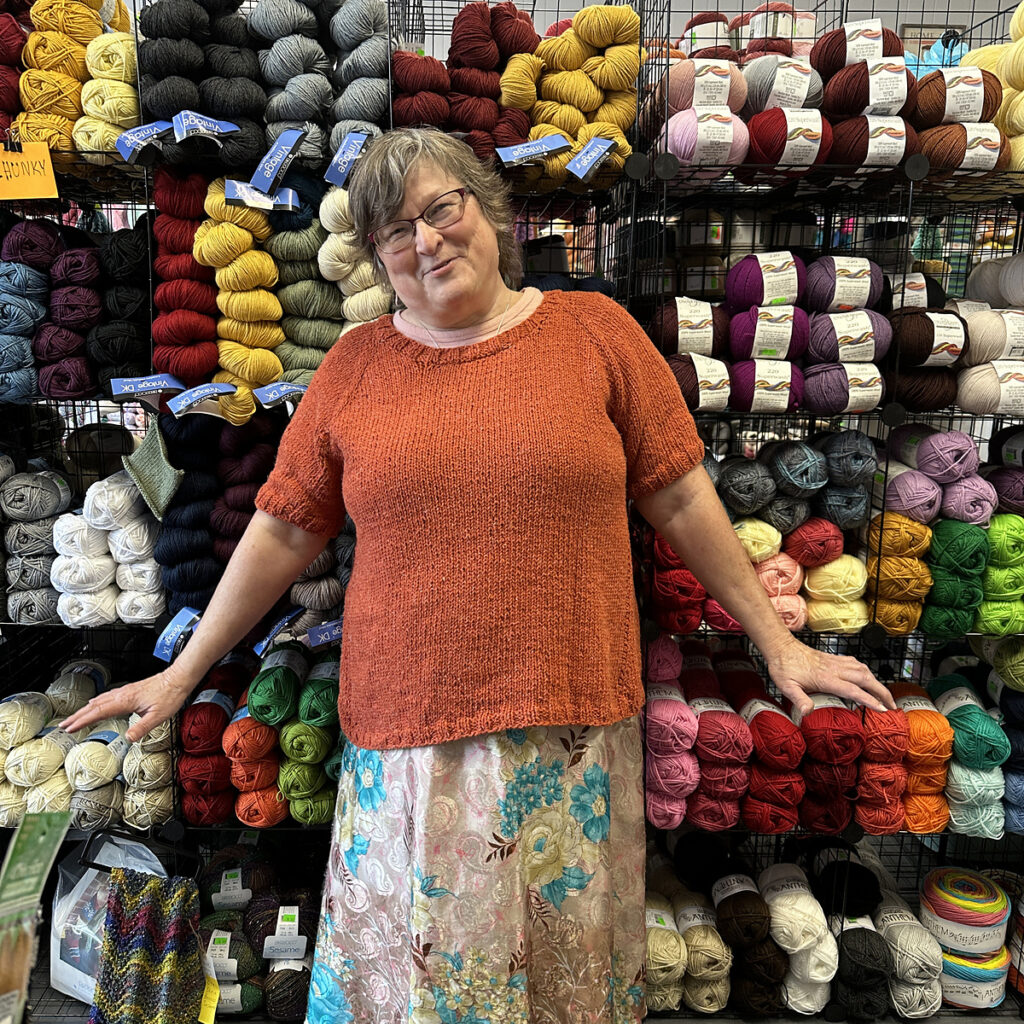
Cindy, at Little House of Yarn in Princeton, Indiana. Ravelry project page here.
#3: Looking for more drape? You have options!
Although I choose Remix and I think it’s a great option, if you are looking to create a fabric that has more drape, there are lots of other ideas to consider! Here are a few to consider:
Silk/linen blends: A worsted-weight that has fibers such as silk, linen or alpaca will give you some really nice drape and looseness. Yarns such as Stolen Stitches Nua (an alpaca/merino/yak blend) or Elsebeth Lavold Silky Wool Aran (a wool/silk blend) are examples of this. Below is another example from Diane who knit her Stevie with a 100% linen yarn, Kestrel:
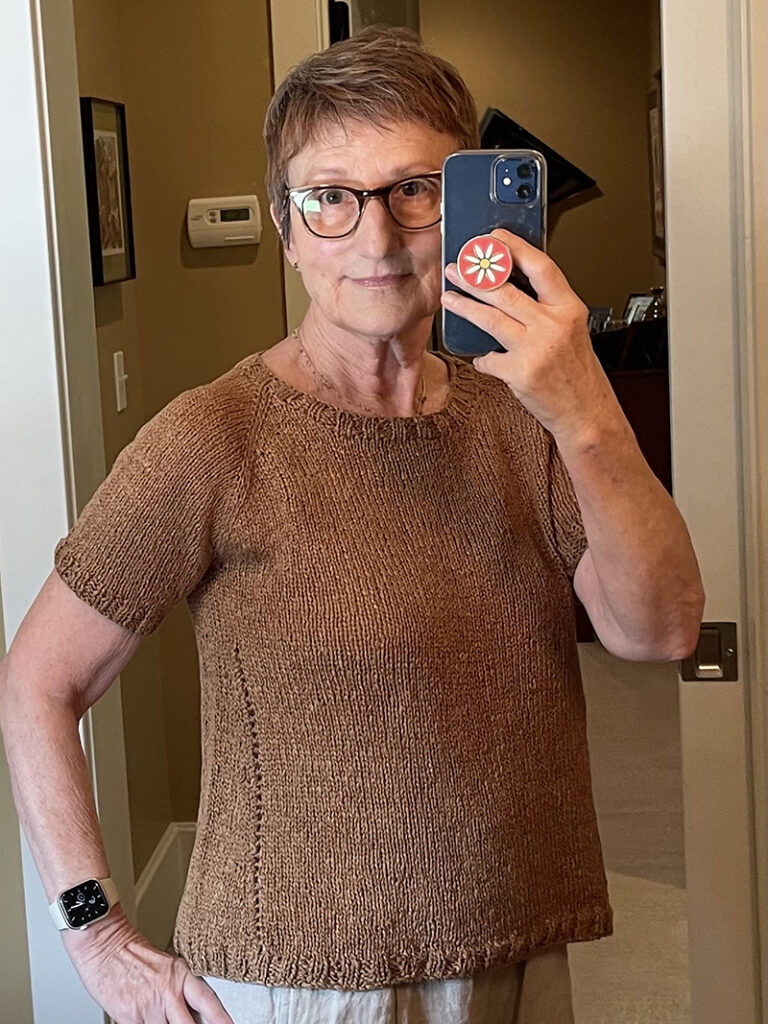
Chainette-constructed yarns: Yarns such as Cumulus by Juniper Moon Farm, Berroco Talara or Cascade Cantata are all perfect examples of worsted-weight yarn that feels light as air due to the construction of the fiber (you can learn more about chainette-constructed fibers in this blog post). Below is a great example from the yarn shop Yarn Refuge – all 3 of these ladies knit Stevie in Juniper Moon Farm Cumulus Dappled (the variegated version of Cumulus):
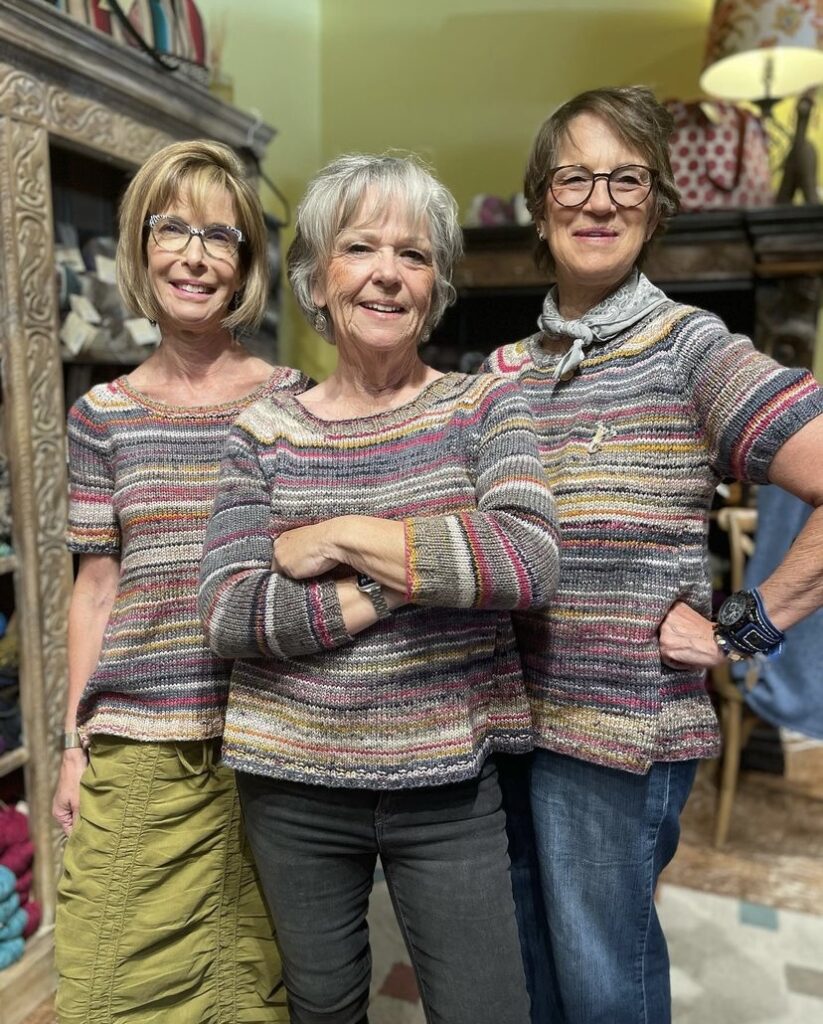
DK instead of worsted-weight: You could also consider using a lighter-weight yarn such as DK (DK is the category just under Worsted, so it’s just a little bit thinner) if you want a looser fabric and more drape. You’ll still want to aim for the same pattern gauge (which is 4 stitches per inch), and you can still do that with a DK-weight yarn but the fabric created at that gauge will be looser and this is what will provide you with more drape. A great example of this was a photo I shared a few years ago from the indie-dyer Sugar Plum Circus who knit Stevie with her Granola DK yarn – pictured below and documented in her blog post here.
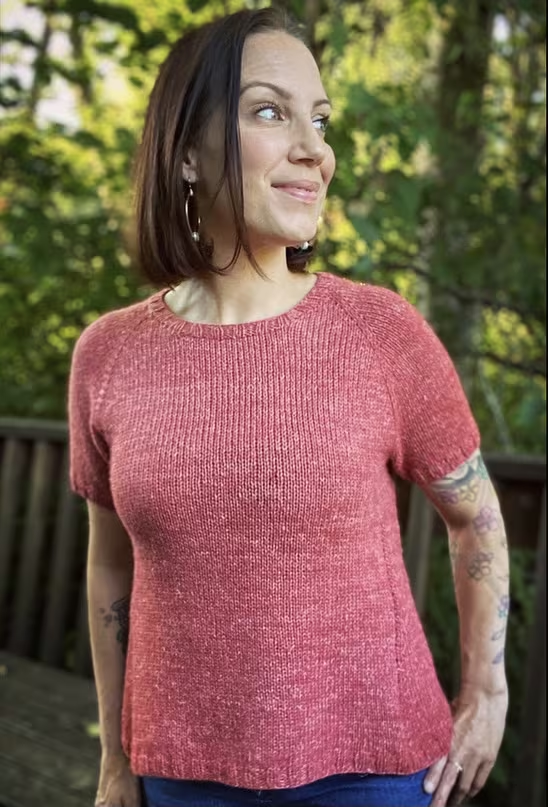
#4: It features A-line body shaping with eyelet details
As you can see in the photo above as well as below, Stevie features A-line shaping and eyelet details at each side. The way I wrote the pattern and increases is such that the increases are made within each “side panel” (so in-between the eyelet columns).
However, if an A-line shape is not your thing, you can omit the side shaping increases. I explain how to do this on my Stevie tips page (see #6 below!)
#5: You can make the sleeves longer if you like
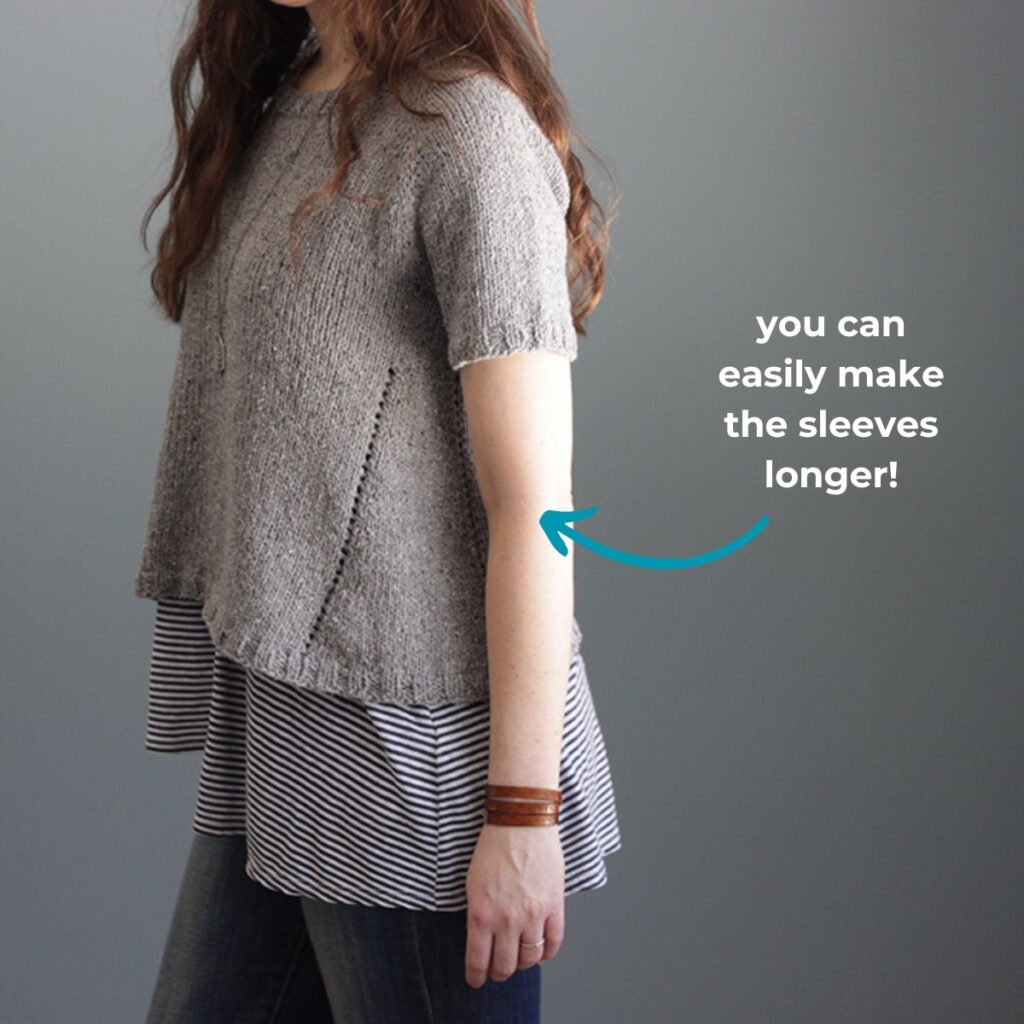
I love a short-sleeve for the warmer-weather and for layering under jackets, but I know many of you may feel like slightly longer sleeves would just be more versatile for you. So a couple of years ago I wrote a blog post that provided specific instructions on how to make the Stevie sleeves 3/4 length – click here to read that blog post!
#6: There’s a Stevie Tips Page for tips & tutorials
Just like all of my patterns, I have a corresponding tips page on my website for Stevie where you will find technique tutorials and tips for how to make your own Stevie. Included on this page are things like: how to pick a size, how to work m1 increases, how to adjust the body shaping and how to lengthen the sleeves (to name just a few). If you’re interested in making your own Stevie, I highly recommend reviewing the tips page first! Click here to check out the page (link is also provided in the pattern).
I hope highlighting these 5 features of Stevie and the Stevie pattern have filled you with inspiration! If you have any questions about this pattern feel free to reach out. And for all of the pattern details (and to purchase the pattern PDF), you can click here for Ravelry or here for my website.

